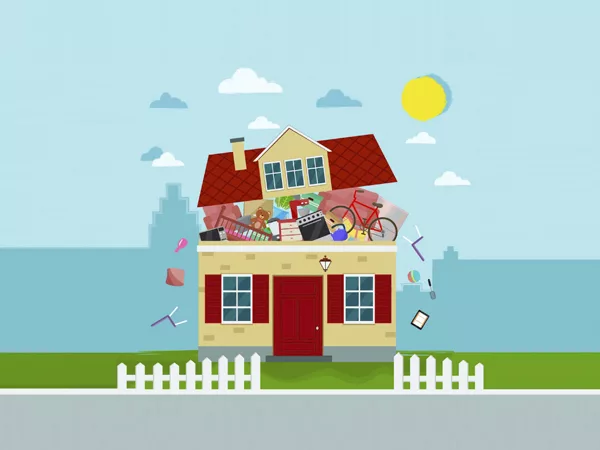What Is Hoarding Behavior & How to Treat It

We’re facing a startling increase in mental health disorders — one of them being hoarding.
But what is hoarding? What are the symptoms? And who does it affect?
What Constitutes Hoarding Behavior
The Diagnostic Statistical Manual 5th Edition, DSM-V (published by the American Psychiatric Association) explains that Hoarding Disorder is present when someone has persistent difficulty discarding or parting with possessions, regardless of their actual value, due to a perceived need to save the items and the distress associated with discarding them.
This person will accumulate possessions that congest and clutter active living areas and substantially compromise their intended use. Hoarders may buy more than they need at stores, yard sales, or flea markets. They might acquire free stuff, such as advertisements, newspapers, trash, and dumpsters. Some people resort to stealing to satisfy their urge to accumulate things, and some people with hoarding disorder also collect many animals.
Some people with hoarding disorder have difficulty understanding the severity of their problem and often resist attempts by others to intervene, even when the clutter has become hazardous. Hoarding disorder can cause people to live in unhealthy and hazardous living environments. It causes stress, shame, and social isolation.
An estimated 2%-6% of the United States population are affected by hoarding disorder.
Commons Signs of Hoarding Disorder
People with hoarding disorders present a variety of symptoms:
- Difficulty managing daily life activities and a tendency toward perfectionism.
- Distrust of others touching their possessions.
- Living in unstable and unhealthy environments, or even isolating themselves socially from family and friends.
- Disorganized.
- Foul odors inside the individual’s living environment and possibly emanating outside.
Causes of Hoarding Issues
Scientific evidence suggests a possible genetic component making it easier to develop hoarding problems. Other causes of hoarding may include brain injury that triggers the need to save stuff, or even a traumatic life event such as the death of a loved one, divorce, or the loss of job.
Hoarding affects everyone: The individual, their family members, and their communities. It is a real mental health issue requiring direct interaction with compassionate, skilled professionals trained in this field.
Other mental health challenges, such as ADHD, depression, and obsessive-compulsive disorder are known comorbidities associated with hoarding disorder.
Treatments for Hoarding Disorder
There are treatments available. Cognitive behavioral therapy (CBT) helps the person learn to understand why they hoard and how to manage anxiety issues when discarding items. Professional organizers specializing in hoarding disorder can help teach individual organization and decision-making skills to manage possessions. And certain antidepressants can improve symptoms.
Most individuals suffering from hoarding behavior find success with a combination of CBT, medications, and a professional organizer working together.
Those with a hoarding disorder can learn new lifestyle behaviors that will help reduce these symptoms and lead to an improved quality of life.






